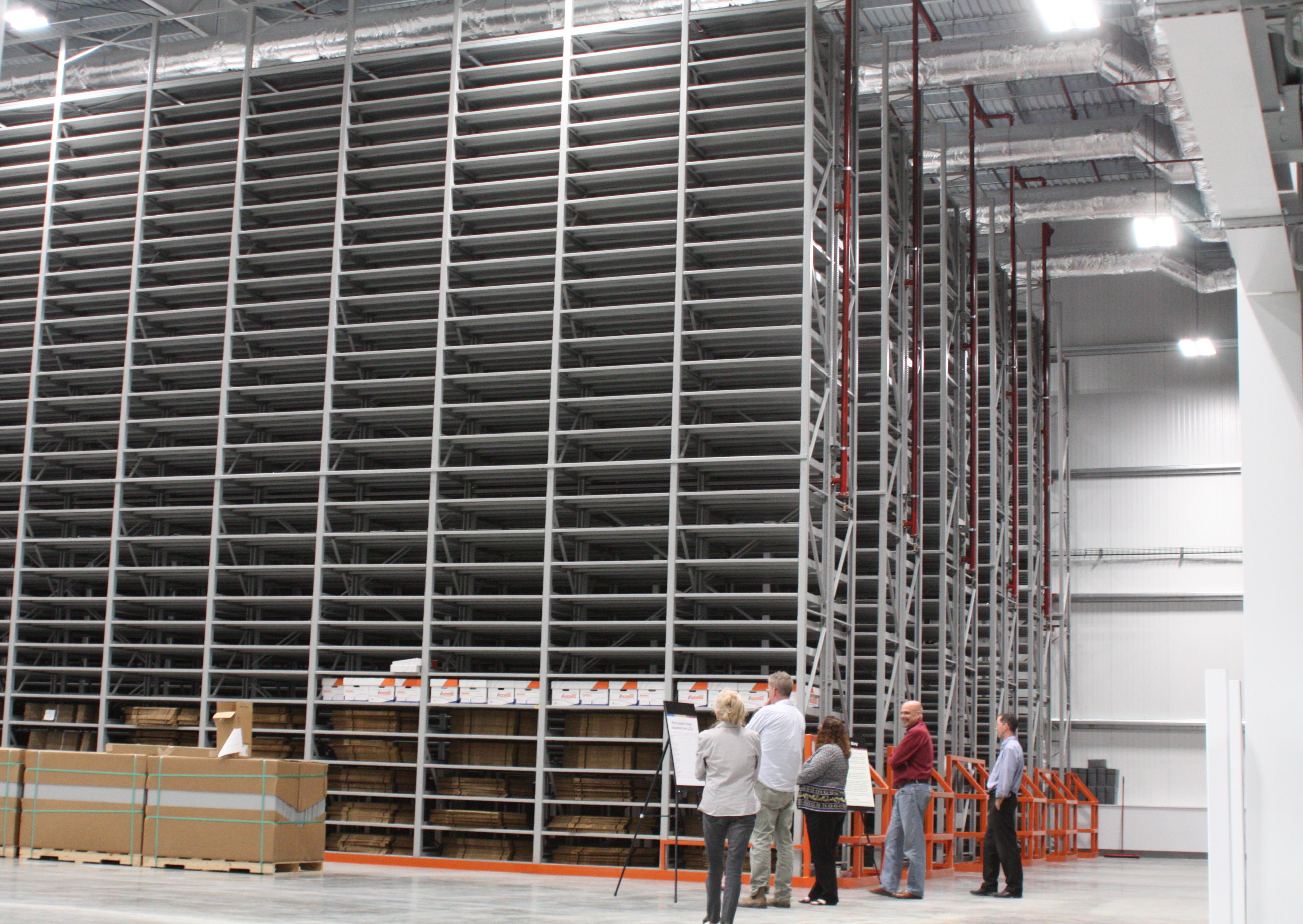
By MARTY LEVINE
With canyon-like arrays of shelving rising 30 feet and stretching more than 43 yards, the University Library System’s new “high-bay” storage facility has just doubled Pitt’s capacity to store materials, from archived collections to books and other items that may see less circulation nowadays but are still important to keep and make accessible.
The new high-density storage facility at the Archives Service Center in Regent Square, which opened Oct. 8, will eventually hold 22 racks of shelving. It supplements the original high-bay unit, which opened in 2002 — its 16,600 square feet, with 14,000 shelves, are at 98 percent capacity, holding 2.8 million volumes. That doesn’t even count the ULS’s map collection, in flat files beside it, which has mostly migrated here from Hillman Library.
“With Hillman being renovated, we knew we would be getting new materials” to store, says Sharon Jasneski, who runs the facility and has spent many hours on its two hydraulic fork lifts, several stories in the air, placing and retrieving library materials here. “I was not a huge fan of heights before this job, but you get pretty used to it. When you’re in there, you’re just between two walls of materials; you have no concept of how high you are until you move to the end and see the people below.”
“We get material from the whole library system, including the regional campuses,” explains Fern E. Brody, associate University librarian for Collections and Technical Services.
“It’s usually the lesser-used, slightly older materials,” Jasneski says. “We try to pull the least-requested items to bring out here.”
 Access to the old and new bays is through the processing room, where materials formerly in circulation are reorganized. Instead of catalog numbers forcing related items together, these materials — books, journals and newspapers, LPs and CDs, VHS tapes and DVDs, films, audio cassettes, microfilm and more — are regrouped and recatalogued by height for most efficient storage.
Access to the old and new bays is through the processing room, where materials formerly in circulation are reorganized. Instead of catalog numbers forcing related items together, these materials — books, journals and newspapers, LPs and CDs, VHS tapes and DVDs, films, audio cassettes, microfilm and more — are regrouped and recatalogued by height for most efficient storage.
Both of these windowless bays are kept at low temperatures and humidity to extend the life of the paper, celluloid and other aging media here. The concrete floors are specially reinforced to take the immense weight of all this storage, and are utterly flat — within an eighth-inch of true — or else the shelving will not sit upright.
The new high bay has LED lighting, shelving that the staff can adjust themselves (unlike the old bay) and paint with reduced off-gassing and less friction to the touch — all to further protect the materials. Brody expects 11 more racks of shelving to be added eventually to the 11 now in place. Filling them will take 30 years, she estimates, with room for 3.1 million volumes.
Today, just one collection of archival materials, the Arlen Specter Senatorial Papers, sits in this vast empty array, alongside Hillman’s microfiche collection.
“We’re not stopping buying things and we don’t want to discard anything,” Brody says. Plus, she adds, “you want to be able to say yes when you are offered those collections.”
Marty Levine is a writer for the University Times. Reach him at martyl@pitt.edu or 412-758-4859.
